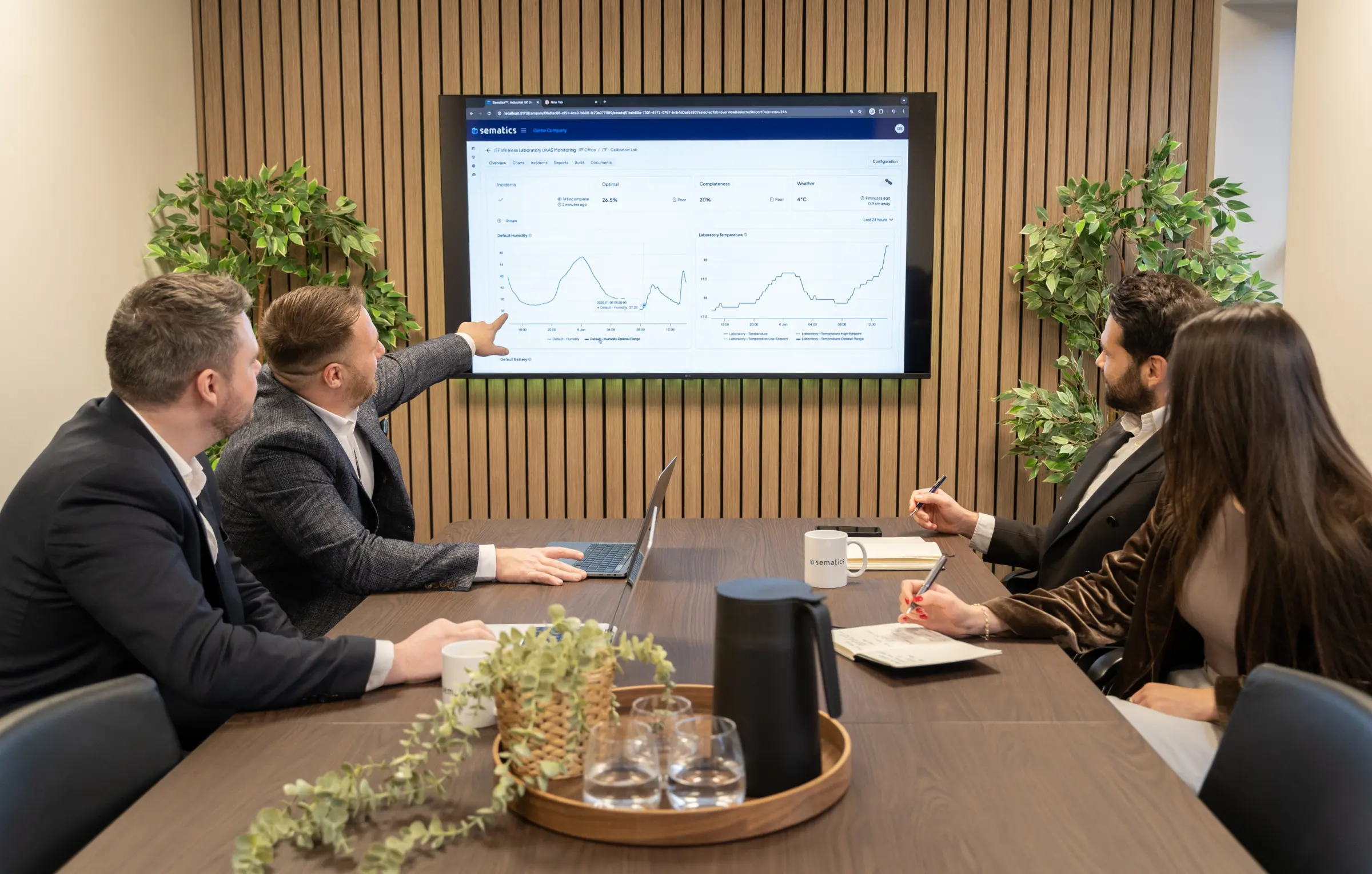
JTF Wireless Whitepaper
Supply chains are the backbone of modern commerce — but without real-time insight, inefficiencies, compliance risks, and operational blind spots can quickly undermine performance.
For industries handling temperature-sensitive products like food and pharmaceuticals, these challenges are magnified, risking regulatory penalties, product spoilage, and reputational damage.
IoT sensors are transforming supply chain management by providing continuous monitoring, predictive analytics, and instant alerts. This enables businesses to optimise operations, protect product integrity, and maintain audit-ready compliance.
IoT technology tackles long-standing operational pain points by giving logistics teams the insight to act faster and smarter.
Challenges addressed include:
Implementing IoT monitoring delivers measurable improvements across logistics and warehousing.
Example: A pharmaceutical distributor used IoT sensors to monitor vaccine shipments. Real-time deviation alerts allowed immediate intervention, preventing millions in losses and ensuring regulatory compliance.
IoT solutions extend beyond tracking — they provide an operational advantage across multiple use cases.
Key applications:
Example: A global food distributor reduced spoilage rates by 30% over a year by deploying IoT sensors in refrigerated trucks, improving delivery reliability and customer satisfaction.
Food Distribution — Reducing Waste Through Real-Time Monitoring
A seafood exporter implemented IoT temperature monitoring for international shipments. A mid-journey refrigeration failure triggered alerts, allowing rapid intervention and saving over $250,000 in product.
Pharmaceuticals — Compliance with Automated Alerts
A biologics manufacturer used IoT monitoring to track environmental conditions in transit. Automated compliance reports cut audit preparation time by 40% while ensuring adherence to FDA and EMA regulations.
The capabilities of IoT sensors will continue to expand as new technologies converge.
IoT sensors are no longer optional in modern supply chains — they’re a competitive requirement. By combining real-time monitoring, predictive analytics, and automated compliance reporting, logistics operators can reduce waste, avoid costly penalties, and strengthen customer relationships.
From cold chain logistics to predictive fleet maintenance, IoT’s impact is clear: smarter data means smarter decisions, lower costs, and higher operational resilience.
Next Step: Explore how JTF Wireless can integrate IoT-enabled monitoring into your supply chain to unlock measurable efficiency, compliance, and customer trust.
Sematics generates automated compliance reports, performance dashboards, and incident logs, ensuring businesses meet audit requirements and optimize their operations.
Yes, Sematics offers flexible solutions, including custom integrations through its API and tailored system configurations to match your operational requirements.
Sematics systems are preconfigured based on stakeholder input before installation. This approach ensures seamless setup and immediate results from day one.
Sematics offers wireless LoRaWAN-based sensors, which reduce installation costs and complexity. Additionally, ongoing calibration, battery replacements, and system optimization ensure long-term value.